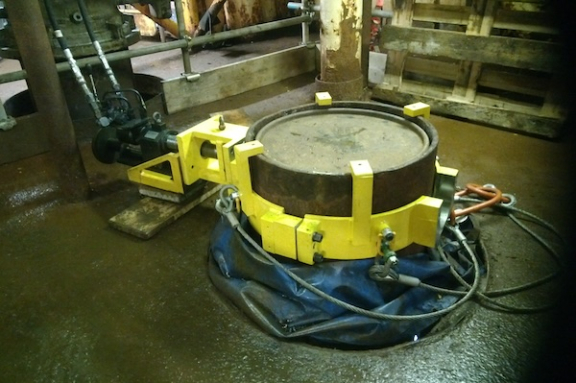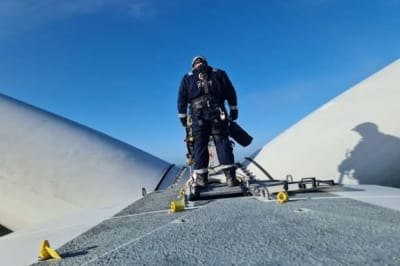Kenny Erskine, Operations Director at Glacier Energy has over 20 years’ experience working within the energy industry, specialising in the repair and refurbishment of heat exchangers. Throughout his career, Kenny has seen first-hand the issues that clients face with their heat exchangers that are inefficient but still in operation.
In this blog, Kenny shares his thoughts on the impact that inefficient heat exchangers can have on your process and his perspective on how to fully maximise efficiency for optimal results.
Why might a heat exchanger be operating ineffectively?
There could be a variety of reasons that you are experiencing problems with your heat exchangers. Perhaps your unit has not been originally built to successfully withstand it’s current operating environment, it has corrosion, fouling/blocked tubes or has been exposed to corrosive or harsh conditions.
Tubes can also fail due to issues such as erosion/corrosion, tube fretting, mechanical damage or thermal stress.
Heat exchangers tend to have a design life of around 20 – 25 years when maintained. If the unit is coming to the end of its operational life span, this could be a reason why it is not performing how it should.
An issue that we regularly come across with our clients equipment is fouling which can be described as a build-up of deposits such as sea growth or scale. Excessive fouling can drastically reduce operational performance/efficiency and increase energy consumption. To prevent this, we advise carrying out regular maintenance inspections.
In short, there are multiple reasons why you could be experiencing issues and it is critical that subject matter experts help identify the root-cause of any problems and propose corrective actions.
What issues can an inefficient heat exchanger cause?
Unplanned Downtime
Heat exchangers that are operating inefficiently may need to be taken offline for cleaning, repairs or maintenance, causing unplanned downtime.
In order for our clients to improve their operations and stay ahead of the competition, we suggest adopting a proactive maintenance strategy which includes regular ‘health checks’ of equipment to flag up potential issues.
Lost Production
Lost production in the UKCS due to heat transfer equipment failures is estimated to be around £600million. You can therefore understand why regular maintenance and refurbishments are critical for mitigating potential losses and improving operating efficiencies.
Environmental Impact
Inefficient heat exchangers can cause increased energy consumption due to the unit requiring more energy to serve its overall purpose. As energy companies are under increased pressure to optimise the performance of their equipment and lower their carbon footprint, it is critical that any unnecessary environmental impact is prevented from an inefficient heat exchanger.
That is one reason why we developed our heat exchanger predictive maintenance tool, HTX Digital which supports the drive towards net zero and can reduce maintenance costs and unplanned downtime by up to 30%.
Safety risk
If working ineffectively, this can cause pressure build up, overheating, corrosion / leaks or environmental hazards through pollution. Ensuring that your heat exchanger is operating effectively by addressing inefficiencies through proper design, maintenance, and monitoring is essential to mitigate these safety risks.
To fully optimise efficiency of your heat exchanger, when would you recommend scheduling a service?
It is advised that you should schedule regular maintenance inspections of your heat exchangers to flag up any potential problems and resolve them before they cause you more issues further down the line.
Our clients maintenance schedules vary. Some opt to carry out reactive maintenance/fix on fail which we don't advise, others do yearly checks for units which are a risk to production or downtime if they fail and some go for maintenance checks every 2/3 years.
Some of our clients get in touch when they themselves have identified a problem. This is often due to temperature pressure monitoring, failing tubes or noticing a decrease in overall performance.
In short, there is no hard and fast rule. It ultimately comes down to preference, budget and the units working environment/conditions.
How can Glacier Energy help clients maximise efficiency?
The first step would be to get in touch with our team. Our heat exchanger experts will discuss your current unit and potential problems that you are facing, create an action plan and recommend the most suitable inspection scope.
As our expertise extends to servicing heat exchangers both onshore and offshore, depending on your situation, we would bring your unit in to one of our workshops or send our team directly out to your site.
An initial inspection would then be carried out including a pressure test and full strip down of the unit. After that’s complete, a visual inspection would be undertaken to fully understand the condition of your heat exchanger.
We would then report back to you with our findings and advise on next steps to help you fully optimise your heat exchanger’s efficiency.
At Glacier Energy, we offer the complete mechanical solution including onshore/offshore inspections and repairs, workshop refurbishment and overhauls’, all supported by our inhouse design and manufacturing capabilities.
Get in Touch
If you would like to maximise the efficiency of your heat exchangers and need some assistance deciding the best option for you, contact us through the form below and we’ll get back to you.




